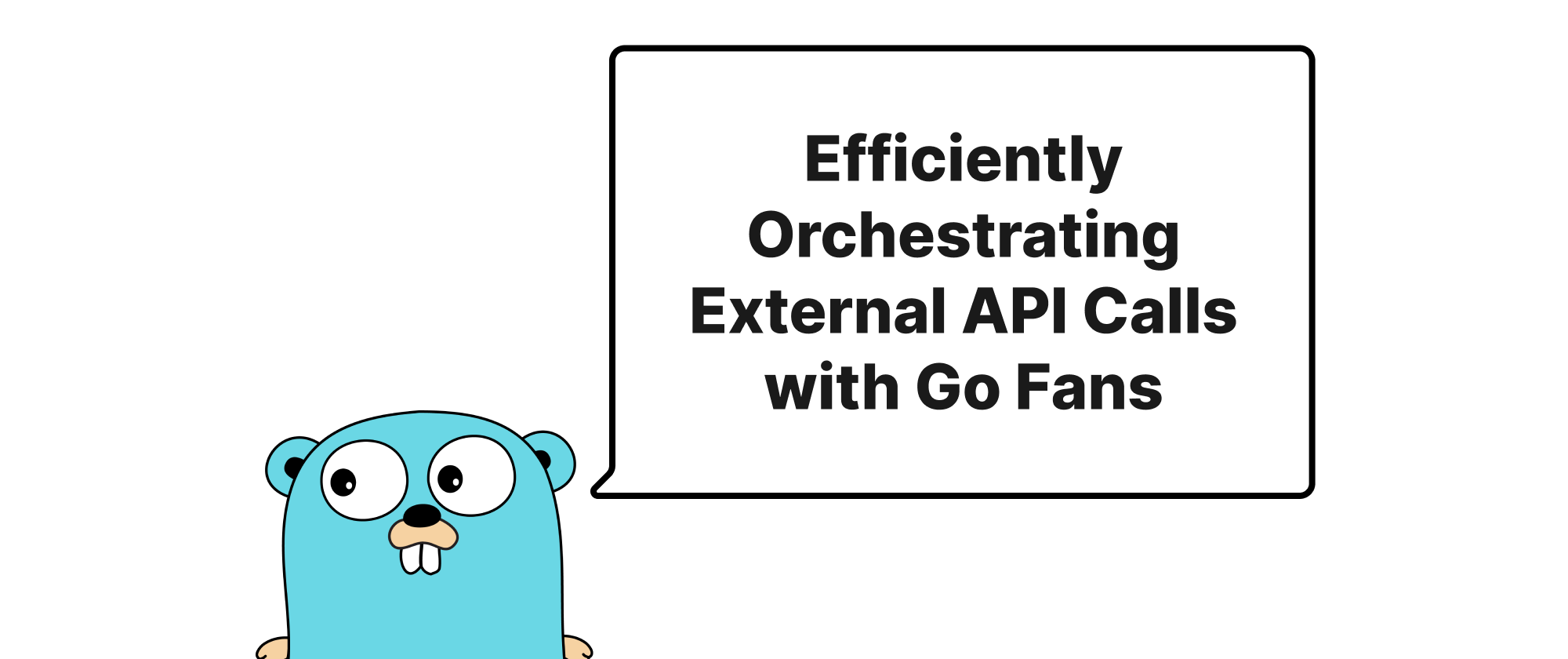モノリスからモジュール性へ Go Webアプリケーションのリファクタリング
James Reed
Infrastructure Engineer · Leapcell

はじめに
Go開発の活気ある世界では、プロジェクトが単一のmain.goファイルを中心に据えたシンプルな構造から始まることがよくあります。このアプローチは、特に小規模なアプリケーションにとって、迅速なプロトタイピングと開発サイクルの短縮を可能にします。しかし、これらのプロジェクトが進化し、複雑さが増し、機能や貢献者が増えるにつれて、その初期のシンプルさはしばしば大きなボトルネックへと変化します。広範囲にわたるmain.goファイルは、ナビゲートが困難になり、デバッグが困難になり、効率的なスケールアップや保守がほぼ不可能になります。この状況は単なる見た目の問題ではなく、開発者の生産性に直接影響を与え、技術的負債を招き、将来の成長を妨げます。この記事では、そのようなモノリシックな構造を解体し、モジュール式で保守可能なGo Webプロジェクトとして再構築し、その潜在能力を最大限に引き出すプロセスをガイドします。
モノリスの解体
リファクタリングプロセスに入る前に、モジュール化の取り組みの基盤となるコアコンセプトについて共通の理解を確立しましょう。
コアコンセプト
- モノリシックアプリケーション: UI、ビジネスロジック、データアクセスなどのすべてのコンポーネントが密接に絡み合い、単一の、不可分なユニットとしてデプロイされるアプリケーション。開始は簡単ですが、成長するにつれてスケーラビリティが悪く、保守が困難で、結合度が高くなります。
- モジュラーアプリケーション: 特定の機能に責任を持つ、別個の独立したモジュールまたはパッケージに分割されたアプリケーション。これらのモジュールは、明確に定義されたインターフェースを介して通信し、結合度を低下させ、保守性を向上させます。
- パッケージ (Go): コード編成の基本的な単位。パッケージは関連する機能をカプセル化し、コードの再利用を可能にし、関心の明確な分離を促進します。
- レイヤードアーキテクチャ: アプリケーションが明確なレイヤーに分割され、それぞれが特定の役割を持つ構造パターン。一般的なレイヤーには、プレゼンテーション(HTTPハンドラー)、サービス(ビジネスロジック)、リポジトリ(データアクセス)が含まれます。これは関心の分離を促進し、テスト容易性を向上させます。
- 依存性注入 (DI): コンポーネントがそれ自体で依存関係(例:データベース接続)を作成するのではなく、それらの依存関係がコンポーネントに提供されるテクニック。これにより、結合度が低下し、コンポーネントがより独立し、テストが簡素化されます。
単一main.goのペインポイント
成長中のプロジェクトにある典型的なmain.goは、次のようになるかもしれません。
// main.go (リファクタリング前) package main import ( "database/sql" "encoding/json" "fmt" "log" "net/http" _ "github.com/go-sql-driver/mysql" // Example database driver ) // User represents a user in the system type User struct { ID int `json:"id"` Name string `json:"name"` Email string `json:"email"` } var db *sql.DB func initDB() { var err error db, err = sql.Open("mysql", "user:password@tcp(127.0.0.1:3306)/database") if err != nil { log.Fatalf("Failed to open database: %v", err) } if err = db.Ping(); err != nil { log.Fatalf("Failed to connect to database: %v", err) } fmt.Println("Connected to database successfully!") } func createUserHandler(w http.ResponseWriter, r *http.Request) { if r.Method != "POST" { http.Error(w, "Method not allowed", http.StatusMethodNotAllowed) return } var user User err := json.NewDecoder(r.Body).Decode(&user) if err != nil { http.Error(w, err.Error(), http.StatusBadRequest) return } stmt, err := db.Prepare("INSERT INTO users(name, email) VALUES(?,?)") if err != nil { http.Error(w, "Internal server error", http.StatusInternalServerError) log.Printf("Error preparing statement: %v", err) return } defer stmt.Close() result, err := stmt.Exec(user.Name, user.Email) if err != nil { http.Error(w, "Internal server error", http.StatusInternalServerError) log.Printf("Error executing statement: %v", err) return } id, _ := result.LastInsertId() user.ID = int(id) w.Header().Set("Content-Type", "application/json") json.NewEncoder(w).Encode(user) } func getUsersHandler(w http.ResponseWriter, r *http.Request) { rows, err := db.Query("SELECT id, name, email FROM users") if err != nil { http.Error(w, "Internal server error", http.StatusInternalServerError) log.Printf("Error querying users: %v", err) return } defer rows.Close() var users []User for rows.Next() { var u User if err := rows.Scan(&u.ID, &u.Name, &u.Email); err != nil { http.Error(w, "Internal server error", http.StatusInternalServerError) log.Printf("Error scanning user: %v", err) return } users = append(users, u) } w.Header().Set("Content-Type", "application/json") json.NewEncoder(w).Encode(users) } func main() { initDB() defer db.Close() http.HandleFunc("/users", getUsersHandler) http.HandleFunc("/users/create", createUserHandler) fmt.Println("Server listening on :8080") log.Fatal(http.ListenAndServe(":8080", nil)) }
このシンプルな例は、すでにいくつかの問題を示しています。
- 密結合: ハンドラーがデータベースに直接対話します。
- 再利用性の欠如: データベースロジック、ビジネスロジック、HTTP処理がすべて混在しています。
- テストの困難さ: 個々のコンポーネント(例:データロジックのみ)をテストすることは、HTTPサーバーもセットアップせずにでは困難です。
- スケーラビリティの悪さ: 新機能の追加は、
main.goのスペースを見つけるゲームになり、潜在的な後方互換性の崩壊を招きます。
モジュール構造へのリファクタリング
より構造化されたアプリケーションにリファクタリングしましょう。レイヤードアーキテクチャを目指します:handler(プレゼンテーション)、service(ビジネスロジック)、repository(データアクセス)。
ステップ 1: アプリケーションの構造を定義する
明確なディレクトリ構造を確立するのは良い出発点です。
├── cmd/
│ └── api/
│ └── main.go // APIのエントリーポイント
├── internal/
│ ├── config/
│ │ └── config.go // アプリケーション設定
│ ├── models/
│ │ └── user.go // データ構造(例:User構造体)
│ ├── repository/
│ │ └── user_repository.go // ユーザーのデータアクセスロジック
│ ├── service/
│ │ └── user_service.go // ユーザーのビジネスロジック
│ └── handler/
│ └── user_handler.go // ユーザーのHTTPリクエストハンドラー
└── go.mod
└── go.sum
cmd/api: Web APIのエントリーポイントが含まれます。internal/: 他のアプリケーションから公開的に import されるべきではない、アプリケーション固有のコードを格納します。config/: アプリケーション設定を管理します。models/: データ構造を定義します。repository/: データストレージと取得を抽象化します。service/: ビジネスロジックを実装します。handler/: HTTPリクエストハンドラーを含みます。
ステップ 2: モデルを抽出する (internal/models/user.go)
まず、User構造体を専用のmodelsパッケージに移動させましょう。
// internal/models/user.go package models // User represents a user in the system type User struct { ID int `json:"id"` Name string `json:"name"` Email string `json:"email"` }
ステップ 3: データベース設定を抽象化する (internal/config/config.go)
設定を一元化するのは良い習慣です。
// internal/config/config.go package config import ( "database/sql" "fmt" "log" _ "github.com/go-sql-driver/mysql" // Example database driver ) // DBConfig holds database connection details type DBConfig struct { User string Password string Host string Port string Database string } // NewDBConfig creates a new default database config func NewDBConfig() DBConfig { return DBConfig{ User: "user", Password: "password", Host: "127.0.0.1", Port: "3306", Database: "database", } } // InitDatabase initializes and returns a database connection pool func InitDatabase(cfg DBConfig) (*sql.DB, error) { connStr := fmt.Sprintf("%s:%s@tcp(%s:%s)/%s", cfg.User, cfg.Password, cfg.Host, cfg.Port, cfg.Database) db, err := sql.Open("mysql", connStr) if err != nil { return nil, fmt.Errorf("failed to open database: %w", err) } if err = db.Ping(); err != nil { return nil, fmt.Errorf("failed to connect to database: %w", err) } log.Println("Connected to database successfully!") return db, nil }
ステップ 4: リポジトリレイヤーを実装する (internal/repository/user_repository.go)
リポジトリはUserオブジェクトのすべてのデータベース操作を処理します。ストレージメカニズムを抽象化するためのインターフェースを定義します。
// internal/repository/user_repository.go package repository import ( "database/sql" "fmt" "your_module_name/internal/models" // Replace your_module_name ) // UserRepository defines the interface for user data operations type UserRepository interface { CreateUser(user *models.User) (*models.User, error) GetUsers() ([]models.User, error) } // MySQLUserRepository implements UserRepository for MySQL type MySQLUserRepository struct { db *sql.DB } // NewMySQLUserRepository creates a new MySQLUserRepository func NewMySQLUserRepository(db *sql.DB) *MySQLUserRepository { return &MySQLUserRepository{db: db} } // CreateUser inserts a new user into the database func (r *MySQLUserRepository) CreateUser(user *models.User) (*models.User, error) { stmt, err := r.db.Prepare("INSERT INTO users(name, email) VALUES(?,?)") if err != nil { return nil, fmt.Errorf("error preparing statement: %w", err) } defer stmt.Close() result, err := stmt.Exec(user.Name, user.Email) if err != nil { return nil, fmt.Errorf("error executing statement: %w", err) } id, _ := result.LastInsertId() user.ID = int(id) return user, nil } // GetUsers retrieves all users from the database func (r *MySQLUserRepository) GetUsers() ([]models.User, error) { rows, err := r.db.Query("SELECT id, name, email FROM users") if err != nil { return nil, fmt.Errorf("error querying users: %w", err) } defer rows.Close() var users []models.User for rows.Next() { var u models.User if err := rows.Scan(&u.ID, &u.Name, &u.Email); err != nil { return nil, fmt.Errorf("error scanning user: %w", err) } users = append(users, u) } return users, nil }
ステップ 5: サービスレイヤーを実装する (internal/service/user_service.go)
サービスレイヤーはアプリケーションのビジネスロジックを含みます。ハンドラーとリポジトリ間のやり取りをオーケストレーションします。
// internal/service/user_service.go package service import ( "fmt" "your_module_name/internal/models" // Replace your_module_name "your_module_name/internal/repository" // Replace your_module_name ) // UserService defines the interface for user-related business logic type UserService interface { CreateUser(name, email string) (*models.User, error) GetAllUsers() ([]models.User, error) } // UserServiceImpl implements UserService type UserServiceImpl struct { userRepo repository.UserRepository } // NewUserService creates a new UserService func NewUserService(repo repository.UserRepository) *UserServiceImpl { return &UserServiceImpl{userRepo: repo} } // CreateUser handles business logic for creating a user func (s *UserServiceImpl) CreateUser(name, email string) (*models.User, error) { if name == "" || email == "" { return nil, fmt.Errorf("name and email cannot be empty") } // Example of business logic: check for existing email // (for brevity, not implemented here, but would involve another repo call) user := &models.User{Name: name, Email: email} createdUser, err := s.userRepo.CreateUser(user) if err != nil { return nil, fmt.Errorf("failed to create user in repository: %w", err) } return createdUser, nil } // GetAllUsers retrieves all users with potential business logic func (s *UserServiceImpl) GetAllUsers() ([]models.User, error) { users, err := s.userRepo.GetUsers() if err != nil { return nil, fmt.Errorf("failed to retrieve users from repository: %w", err) } return users, nil }
ステップ 6: ハンドラーレイヤーを実装する (internal/handler/user_handler.go)
ハンドラーレイヤーはHTTPリクエストとレスポンスを処理し、ビジネスロジックをサービスレイヤーに委任します。
// internal/handler/user_handler.go package handler import ( "encoding/json" "net/http" "log" "your_module_name/internal/models" // Replace your_module_name "your_module_name/internal/service" // Replace your_module_name ) // UserHandler handles HTTP requests related to users type UserHandler struct { userService service.UserService } // NewUserHandler creates a new UserHandler func NewUserHandler(svc service.UserService) *UserHandler { return &UserHandler{userService: svc} } // CreateUserHandler handles POST requests to create a new user func (h *UserHandler) CreateUserHandler(w http.ResponseWriter, r *http.Request) { if r.Method != "POST" { http.Error(w, "Method not allowed", http.StatusMethodNotAllowed) return } var reqUser struct { Name string `json:"name"` Email string `json:"email"` } err := json.NewDecoder(r.Body).Decode(&reqUser) if err != nil { http.Error(w, "Invalid request body", http.StatusBadRequest) return } user, err := h.userService.CreateUser(reqUser.Name, reqUser.Email) if err != nil { http.Error(w, err.Error(), http.StatusBadRequest) // Often a 400 for business logic errors log.Printf("Error creating user: %v", err) return } w.Header().Set("Content-Type", "application/json") w.WriteHeader(http.StatusCreated) json.NewEncoder(w).Encode(user) } // GetUsersHandler handles GET requests to retrieve all users func (h *UserHandler) GetUsersHandler(w http.ResponseWriter, r *http.Request) { if r.Method != "GET" { http.Error(w, "Method not allowed", http.StatusMethodNotAllowed) return } users, err := h.userService.GetAllUsers() if err != nil { http.Error(w, "Internal server error", http.StatusInternalServerError) log.Printf("Error getting users: %v", err) return } w.Header().Set("Content-Type", "application/json") json.NewEncoder(w).Encode(users) }
ステップ 7: main.goを再構築する (cmd/api/main.go)
main.goファイルはオーケストレーターとして機能し、依存関係をセットアップし、コンポーネントを配線します。ここで依存性注入が輝きます。
// cmd/api/main.go (リファクタリング後) package main import ( "fmt" "log" "net/http" "your_module_name/internal/config" // Replace your_module_name "your_module_name/internal/handler" // Replace your_module_name "your_module_name/internal/repository" // Replace your_module_name "your_module_name/internal/service" // Replace your_module_name ) func main() { // 1. 設定の初期化 dbConfig := config.NewDBConfig() // 2. データベースの初期化 db, err := config.InitDatabase(dbConfig) if err != nil { log.Fatalf("Failed to initialize database: %v", err) } defer db.Close() // 3. リポジトリレイヤーのセットアップ userRepo := repository.NewMySQLUserRepository(db) // 4. サービスレイヤーのセットアップ userService := service.NewUserService(userRepo) // 5. ハンドラーレイヤーのセットアップ userHandler := handler.NewUserHandler(userService) // 6. ルートの登録 https.HandleFunc("/users", userHandler.GetUsersHandler) https.HandleFunc("/users/create", userHandler.CreateUserHandler) fmt.Println("Server listening on :8080") log.Fatal(http.ListenAndServe(":8080", nil)) }
リファクタリングされた構造からの主なポイント:
- 関心の明確な分離: 各パッケージは単一で、明確に定義された責任を持ちます。
- 結合度の低下: コンポーネントはインターフェース(例:
UserRepository、UserService)を介して対話するため、具体的な実装への依存度が低くなります。MySQLからPostgreSQLにデータベースを変更するには、PostgreSQLUserRepositoryを作成し、main.goの1行を変更するだけで済みます。 - テスト容易性の向上: 各レイヤーは独立してテストできます。データベース接続なしで
UserServiceをテストするためにUserRepositoryをモックしたり、複雑なビジネスロジックなしでUserHandlerをテストするためにUserServiceをモックしたりできます。 - 保守性の向上: バグの特定が容易になり、コードベースの関連性のない部分を広範囲に修正することなく、新機能を追加できます。
- スケーラビリティ: (マイクロサービスコンテキストでは必要ですが、モノリスにも役立つパターンです)特定のサービスを必要に応じて水平スケーリングしやすくします。
使用法とアプリケーション
この構造化されたアプリケーションを実行するには、go.modファイルがあることを確認してください。
go mod init your_module_name # Replace with your actual module name, e.g., github.com/yourusername/webapp go mod tidy
その後、プロジェクトのルートから次のように実行します。
go run cmd/api/main.go
curlやPostmanのようなツールを使用して、エンドポイントをテストできます。
- ユーザー作成 (POST):
curl -X POST -H "Content-Type: application/json" -d '{"name": "Alice", "email": "alice@example.com"}' http://localhost:8080/users/create - ユーザー取得 (GET):
curl http://localhost:8080/users
このレイヤードアーキテクチャは、保守可能でスケーラブルなGo Webアプリケーションを構築するための堅牢な基盤を提供し、単一で広範囲にわたるmain.goファイルの制限を超えています。
結論
モノリシックなmain.goを、構造化されたモジュール化されたGo Webプロジェクトにリファクタリングすることは、長期的なプロジェクトの健全性にとって重要なステップです。レイヤードアーキテクチャを採用し、パッケージやインターフェースなどの概念を活用することで、関心の明確な分離を実現し、結合度を低下させ、テスト容易性と保守性を大幅に向上させます。この変革により、開発チームは、進化する要件に柔軟に対応できる、より堅牢でスケーラブルなアプリケーションを構築できるようになります。


